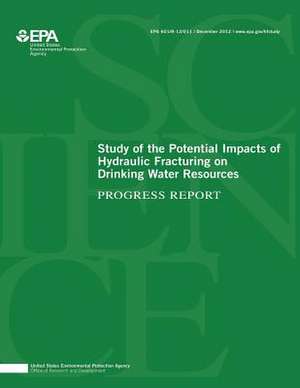Study of the Potential Impacts of Hydraulic Fracturing on Drinking Water Resources
Autor U. S. Environmental Protection Agencyen Limba Engleză Paperback
Preț: 183.38 lei
Nou
Puncte Express: 275
Preț estimativ în valută:
35.09€ • 38.24$ • 29.57£
35.09€ • 38.24$ • 29.57£
Carte disponibilă
Livrare economică 02-16 aprilie
Preluare comenzi: 021 569.72.76
Specificații
ISBN-13: 9781507587270
ISBN-10: 1507587279
Pagini: 276
Dimensiuni: 216 x 279 x 15 mm
Greutate: 0.64 kg
Editura: CREATESPACE
ISBN-10: 1507587279
Pagini: 276
Dimensiuni: 216 x 279 x 15 mm
Greutate: 0.64 kg
Editura: CREATESPACE
